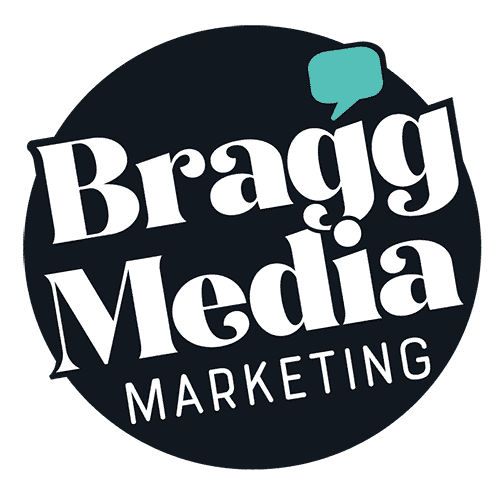
The key to successful marketing involves two important facts:
- Know your audience
- Be helpful when your audience needs you to be
Today’s audience is tired of in-your-face advertising. They scroll past pay per click ads. They hang up on telemarketers. They don’t answer their mobile when an unfamiliar number shows up. They trash e-blasts. They throw direct mail in the recycling bin.
With a world of infinite information at their fingertips, customers are impatient. Thanks to the age of assistance, people can get what they want when they want it. Need a ride? Call Uber or Lyft. Need that thing you want? Order it on Amazon and it’s likely to be at your doorstep the next day.
Brands with staying power are those that understand micro-moments — being present when your audience is consuming content.
What are micro-moments?
Google coined this latest marketing buzzword as the “moment” when consumers turn to their device to look for a specific piece of information. Where to go? What is this place like? What to buy? What is its price?
Miro-moments occur when a consumer turns to their mobile device in search of answers. Computers are for browsing and mobile devices are for action, according to Jia Wertz of Forbes. About 82% of people use their mobile phones to help them decide if they should buy a certain product at a brick and mortar store.
Micro-moments mean brands know how and when to capitalize on the opportunity to initiate customer interaction and to shape the buying decision of the target audience.
How do micro-moments work?
Google breaks down micro-moments into four stages — similar to the traditional sales funnel representing the buyer’s journey (attract, convert, close and delight):
1. “I want to know” — The moment when a consumer considers a category or product
Whenever customers have a question, they turn to their mobile device to look for answers. About 65% of people use their phones to find the most relevant information, such as the benefits of a particular ingredient in a skincare product. It does not matter from which company or brand they get the information. About 90% of people do not have their mind fixed on one brand when they plan to make a purchase.
Does your company provide content to answer their questions?
Here’s what consumers are looking for:
- Information about the product or service (i.e. what it is and what it does)
- Reviews from other people, including bloggers, influencers, and real customers
- Price
Get social with us!
Like what you’re reading?
Subscribe to Bragg Media’s monthly newsletter.
2. “I want to go” — The moment when a consumer evaluates and compares.

When’s the last time you have been on vacation? You’re walking along, seeing the sights. Suddenly, you realize you’re hungry. You pull out your phone and head straight for Google. “Restaurants near me” tops the recommended search phrases.
This stage in the buyer’s journey is crucial for micro-moment marketing. About 50% of people visit an office, store, or business within a day of searching.
It’s important to provide quick answers. Google receives more than 40,000 searches every second. There is a demand for answers and customers do not want to wait for them. When you answer potential questions before people ask them, it can be an effective way to communicate with users.
Does your company make the buying decision easy? A huge reason why people turn to another brand is that they have received more useful information. Here is how your brand can get an edge on the competition with micro-moments:
- Necessary and easy-to-understand instructions about your company’s locations; NETA Brookeline, a cannabis dispensary in Massachusetts, goes so far to provide a downloadable Transportation Guide with easy-to-understand maps detailing subway stops, cycling information, bus routes, driving directions and parking instructions.
- In addition to easy-to-understand directions, don’t forget about your business hours. This might seem like a no-brainer, but many small businesses commonly make it difficult to find business hours. Don’t forget to update changes in business operations with holidays.
3. “I want to do” — The moment when a consumer is ready to buy
Now that the customer is ready to buy, do you make it easy for them?
If the user has to take the time to fill out a gazillion registration questions, they may not stick around to make the purchase. If they’re buying clothing, does your site clearly explain fitting? What if they want to make a return?
When your content answers questions before your consumer has them, you’re building trust and brand authority. Today’s savvy customer sees transparency as a helpful part in their process.
Some content ideas to consider:
- How-to videos or instructional videos on how to use your product or your service. Customers who do not want to spend time reading an article can watch videos to learn more.
- A click to call button makes it easy for consumers to reach you.
- An FAQ section makes it easy to understand what it’s like to buy from you, how to buy from you and when to buy from you.
The easier it is to purchase from you, the quicker you convert a lead into a customer. Start by leveraging search data or research forums to find out what questions prospective customers have relative to your industry.

4. “I want to buy” — The moment the consumer makes a purchase
When a user searches for a particular product at home and an ad pops up showing your brand, the user will likely research reviews from other happy customers instead of clicking on the ad! Once this due diligence is complete, they’re ready to make a purchase.
Yes! I’m ready for a marketing agency.
Fill out this two-minute marketing assessment form and receive a free first-time marketing consultation.
How to make micro-moments work for you
It’s during micro-moments when your customer wants to immediately accomplish a task. They know what they want. The question is: Is your content helpful in the moment your customer needs it most?
Here are some key takeaways from micro-moment marketing:
- Be there for the users. Anticipate for your audience and provide them what they need — whether it is a detailed description of a product, a service, or even your business.
- Provide useful information. While you can present any information to the users, it does not mean you should. You want them to have a relevant experience when they search for information during these micro moments.
- Be a reliable source. To master micro-moments, create a seamless customer experience that dominates the right channels using video and written content.
- Use outside help. Turn to Google Analytics to decipher what your customers want to know about.
- Respond immediately. Consumers are more loyal to their needs than any particular business. This is your opportunity to impress them. Give them what they need to help them make on-the-spot decisions, such as your business hours, location, delivery wait times, price, detailed info on your process, etc.
Micro-moments are powerful points of interest vital to today’s digital marketing. Helpful content that is geared toward the customer’s mobile search habits offers a host of benefits — from increasing brand awareness to convincing customers to buy.
When your brand become a trusted source of information, you demonstrate expertise and create a long-lasting relationship with your customer.
 Marketing Retainers
Marketing Retainers
Branding, creative, digital and strategy with results.
